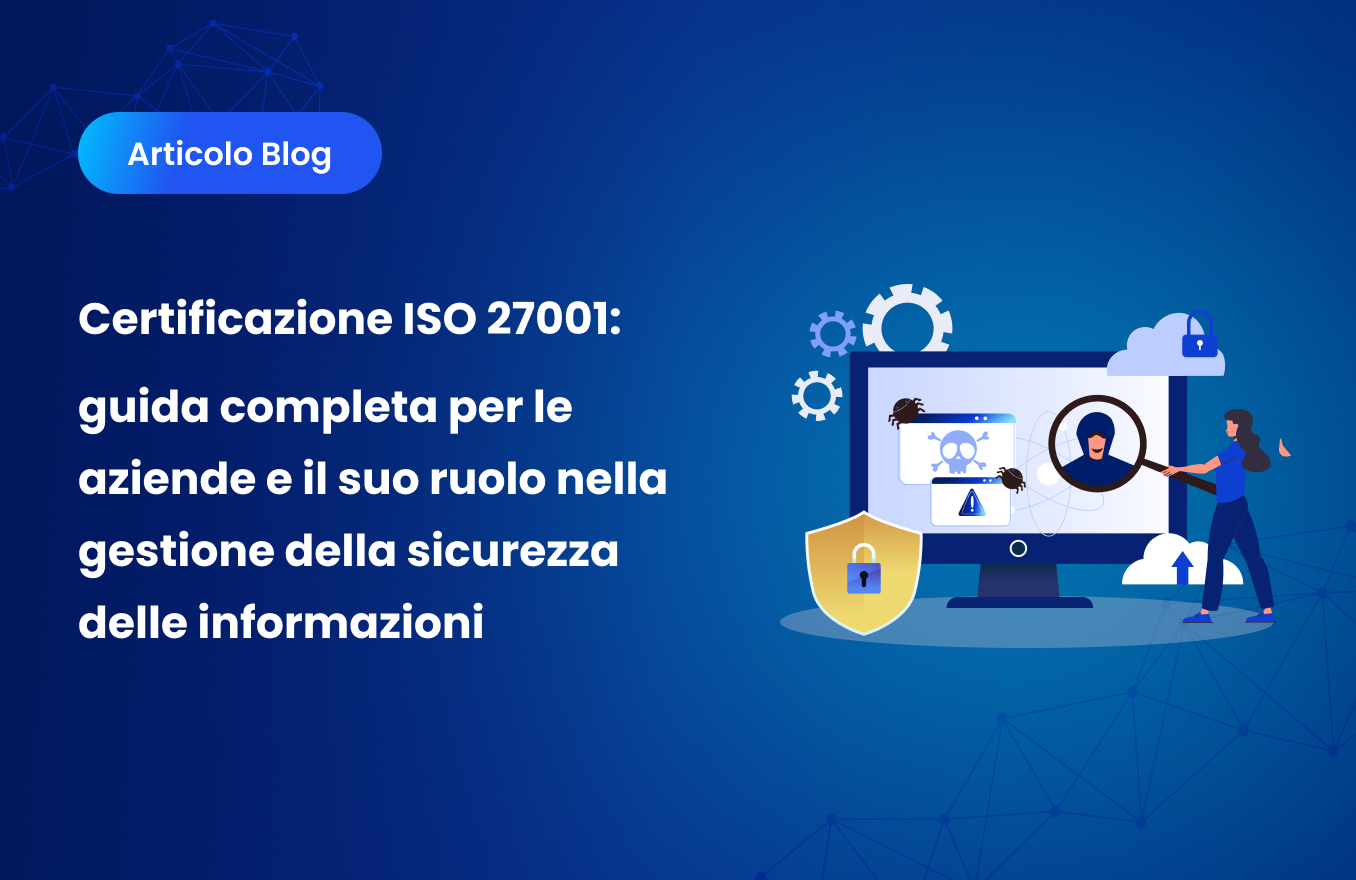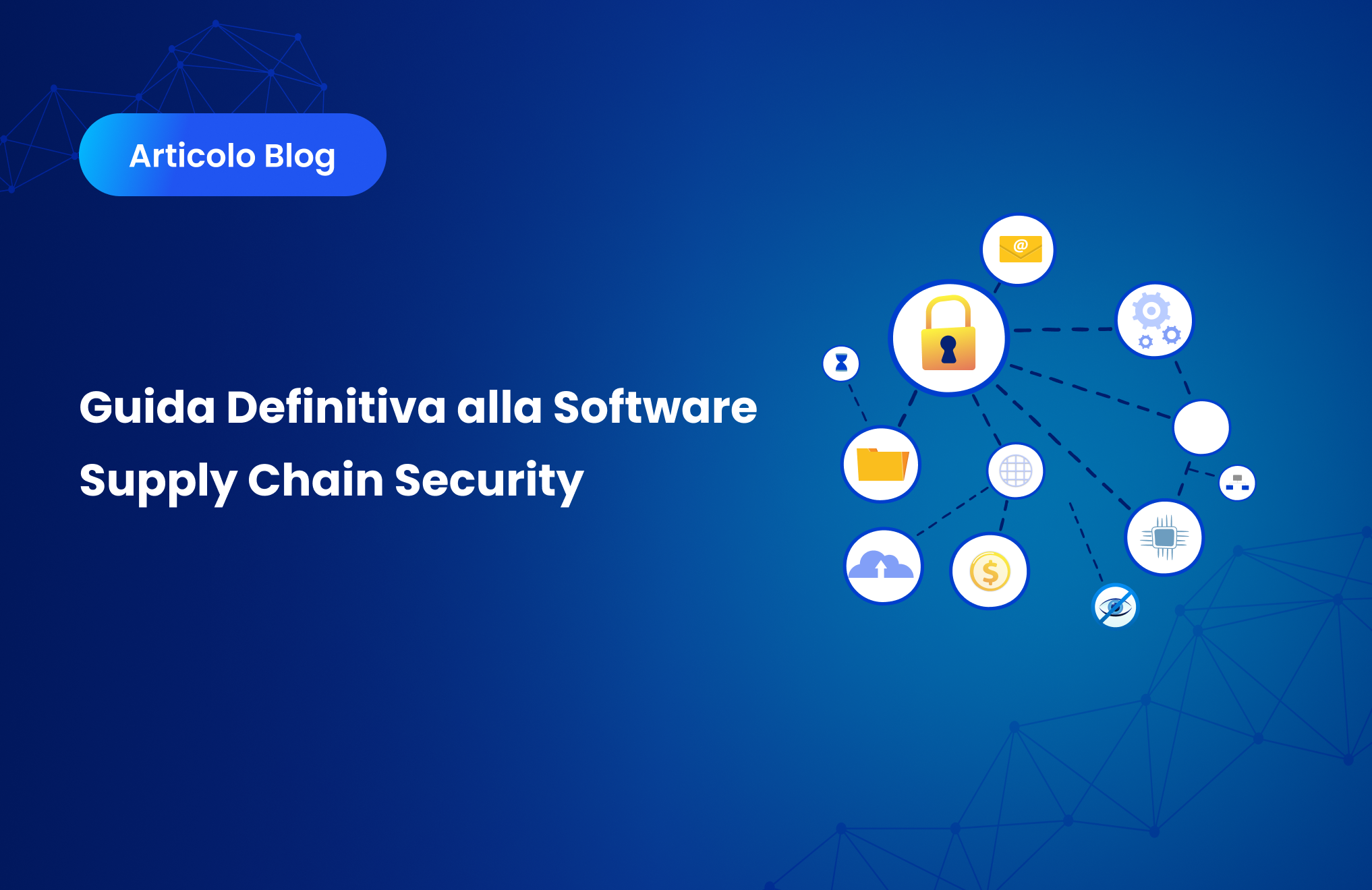Perché hai bisogno sia della gestione della superficie di attacco che della gestione delle vulnerabilità

UN Rapporto Cybersecurity Ventures del 2023 prevede che la spesa globale per la criminalità informatica aumenterà da 3 trilioni di dollari nel 2015 a 10,5 trilioni di dollari all'anno entro il 2025. Ciò dimostra quindi il crescente contesto di minacce che le aziende devono affrontare. Pertanto, le aziende devono implementare solide misure di sicurezza per salvaguardare efficacemente le proprie risorse digitali da attacchi sempre più potenti.
Gestione della superficie di attacco (ASM) e gestione delle vulnerabilità (VM) sono componenti fondamentali in ogni strategia di sicurezza informatica. Tuttavia, questi termini hanno scopi diversi ma complementari nella protezione delle difese di un'azienda, anche se sono usati in modo intercambiabile.
Quindi, perché è fondamentale integrare ASM e VM? Esaminiamo più a fondo questo argomento per comprendere l'importanza di entrambi questi aspetti per un atteggiamento di sicurezza resiliente.
Cos'è l'Attack Surface Management (ASM) nella sicurezza informatica?
Il processo di monitoraggio, riconoscimento e risoluzione regolari dei rischi di sicurezza su una rete aziendale è noto come gestione della superficie di attacco nella sicurezza informatica. L'obiettivo principale di ASM è ridurre al minimo la superficie di attacco in modo che gli hacker non possano accedere facilmente alla sicurezza della rete.
Ad esempio, un programma ASM analizza le vulnerabilità come i servizi esposti e il software obsoleto. Pertanto, l'aggiornamento del software e delle configurazioni riduce i potenziali punti di ingresso per gli hacker.
Ecco alcuni vantaggi della gestione della superficie di attacco:
- Postura di sicurezza migliorata: ASM offre una visione completa delle risorse digitali, aiutando i team di sicurezza a riconoscere i punti deboli e ridurre al minimo i rischi di attacco.
- Riduzione del rischio: ASM monitora ed esamina le vulnerabilità, riduzione dei rischi di violazione e protezione dei dati sensibili.
- Allocazione efficiente delle risorse: Riconoscere la superficie di attacco aiuta a dare priorità agli asset importanti, ottimizzando gli sforzi di sicurezza.
- Visibilità migliorata: Le tecnologie ASM semplificano la valutazione e la gestione dei rischi rendendo visibili tutte le risorse IT, anche quelle nascoste.
Cos'è la gestione delle vulnerabilità (VM)?
La gestione delle vulnerabilità nella sicurezza informatica è un'attività continua, proattiva e spesso automatizzata che protegge i sistemi informatici, le reti e le applicazioni aziendali da attacchi informatici e violazioni dei dati.
Ad esempio, un programma di gestione delle vulnerabilità analizza regolarmente la rete di un'azienda alla ricerca di punti deboli, come software privo di patch o configurazioni errate. Quindi applica automaticamente le patch o consiglia correzioni per prevenire potenziali exploit.
Diamo un'occhiata ad alcuni dei vantaggi del processo di gestione delle vulnerabilità:
- Sicurezza avanzata: Riconosce e assegna priorità alle falle di sicurezza, consentendo una protezione proattiva dei dati aziendali.
- Correzioni immediate delle vulnerabilità: Automatizza i processi di applicazione delle patch per affrontare rapidamente le nuove minacce alla sicurezza informatica.
- Efficienza operativa: Assegna priorità ai problemi di sicurezza critici, semplifica gli sforzi di risoluzione e consente di risparmiare risorse.
- Visibilità e reportistica migliorate: Offre informazioni fruibili e report personalizzati per un migliore monitoraggio e processo decisionale.
Principali differenze tra la superficie di attacco e la gestione delle vulnerabilità
Riconoscere le differenze tra la gestione della superficie di attacco e il processo di gestione delle vulnerabilità è significativo per eseguire una strategia di sicurezza informatica completa. Inoltre, ognuno di essi affronta aspetti distinti della mitigazione delle minacce, anche se entrambi mirano a migliorare la sicurezza.
Ora, esploriamo brevemente le principali differenze tra ASM e VM:
AspectAttack Surface ManagementGestione delle vulnerabilitàAmbitoIdentifica e gestisce tutti i potenziali punti di ingresso per gli aggressori, inclusi hardware, software e risorse di rete. Si concentra sui punti deboli specifici dell'infrastruttura, delle applicazioni e dei sistemi esistenti.ApproccioMonitoraggio proattivo per anticipare potenziali vie di attacco prima dello sfruttamento. Identificazione reattiva delle vulnerabilità dopo la scoperta o lo sfruttamento.StrategiaRiduce la superficie di attacco minimizzando i potenziali punti di ingresso tramite tecniche come il rilevamento delle risorse e il controllo degli accessi. Riduce l'esposizione alle vulnerabilità note attraverso l'identificazione e l'applicazione di patch tempestive.ConcentrarsiRiconosce l'intera superficie di attacco, comprese le risorse esterne, i sistemi interni, l'infrastruttura cloud e le integrazioni di terze parti. Risolve principalmente le vulnerabilità all'interno di infrastrutture, applicazioni e sistemi esistenti.
Le migliori pratiche per l'implementazione di entrambe le strategie
Il primo passo per implementare la gestione della superficie di attacco e la gestione delle vulnerabilità consiste nel comprendere e registrare appieno tutte le risorse, le reti e i punti di ingresso del sistema. Una volta chiarita la situazione, dai la massima priorità alle seguenti pratiche consigliate:
- Individuazione continua degli asset:
Riconosci e assegna priorità alle risorse importanti, come i dati sensibili e i sistemi vitali, per personalizzare efficacemente le tue misure di sicurezza. Inoltre, investite in solide procedure di sicurezza per proteggere queste risorse da possibili intrusioni.
- Valutazione delle vulnerabilità:
Effettuate valutazioni approfondite per individuare i punti deboli dei vostri sistemi. Questo vi aiuterà ad affrontare i punti deboli in modo proattivo per mitigare i rischi. Inoltre, dai priorità alla protezione delle difese digitali da potenziali vulnerabilità.
- Monitoraggio continuo:
Implementa sofisticati sistemi di monitoraggio per rilevare attivamente attività o intrusioni sospette. Ciò, a sua volta, garantirà un rilevamento e una risposta tempestivi. Inoltre, la sorveglianza continua aiuta a riconoscere e neutralizzare le minacce prima che si intensifichino.
- Pianificazione della risposta:
Sviluppa protocolli completi di risposta agli incidenti per affrontare le violazioni della sicurezza e mitigarne rapidamente le conseguenze. Pertanto, ciò ti consentirà di contenere in modo efficiente le violazioni e proteggere le difese contro attacchi futuri.
Di conseguenza, le organizzazioni possono migliorare il loro livello di sicurezza e mitigare con successo i rischi informatici applicando queste best practice sia nella gestione della superficie di attacco che nella gestione delle vulnerabilità.
In che modo la gestione della superficie di attacco e la gestione delle vulnerabilità interagiscono?
Le organizzazioni hanno bisogno sia della gestione della superficie di attacco che della gestione delle vulnerabilità per costruire una solida postura di sicurezza informatica in grado di gestire e mitigare i rischi di sicurezza IT. Ecco come collaborano:
- Visione olistica con ASM
ASM fornisce una panoramica completa delle risorse di un'organizzazione rivolte a Internet. In quanto tale, svolge un ruolo significativo nell'aiutare a gestire efficacemente i rischi informatici. Pertanto, è in grado di riconoscere ogni possibile punto di ingresso che gli aggressori potrebbero sfruttare, garantendo così che nulla venga trascurato.
- Precisione della gestione delle vulnerabilità
La scansione delle vulnerabilità è eccellente per identificare e risolvere i problemi interni di sicurezza informatica, anche se potrebbe non rilevare vulnerabilità di terze parti. Pertanto, questa precisione è essenziale per le esigenze interne di sicurezza e conformità IT.
Detto questo, è essenziale verificare se la propria azienda deve rispettare gli standard normativi. Ciò è dovuto al fatto che ASM, alla gestione delle vulnerabilità e, a volte, test di penetrazione sono obbligati dalla legge. Ad esempio, secondo un recente Rapporto Gartner, il 60% delle organizzazioni implementerà il rischio di sicurezza informatica come fattore determinante per l'esecuzione di transazioni con terze parti entro il 2025.
Stephane Nappo, Global Chief Information Security Officer, ha giustamente dichiarato:»La sicurezza informatica è molto più di una questione di IT.«In quanto tali, queste parole sottolineano l'importanza di un approccio completo alla sicurezza informatica, che combini sia l'esterno che l'interno gestione delle minacce.
Ecco la cosa da tenere a mente: insieme, ASM e VM stanno completando le procedure che offrono un piano di sicurezza completo. Mentre la VM aiuta a localizzare e correggere le vulnerabilità all'interno della superficie di attacco, ASM aiuta a ridurre la superficie di attacco.
In che modo ResilientX può aiutare con ASM e VM?
ResilientX è una piattaforma unificata di gestione dell'esposizione che unifica la superficie di attacco, il Web, Test di sicurezza della rete, Automazione della sicurezza nel cloud e Gestione del rischio di terze parti.
Ora, esploriamo perché ResilientX è il migliore tra gli altri:
- Caratteristiche ASM:
- IP e host esterni: Identifica e proteggi ogni punto di ingresso esterno.
- Servizi e porti: Scopri e proteggi i servizi attivi e le porte aperte.
- Potenziali vulnerabilità: individua e risolve in modo proattivo i difetti di sicurezza.
- Caratteristiche della VM:
- Gestione completa delle vulnerabilità: Identifica, valuta e mitiga le vulnerabilità della rete.
- Misure di sicurezza avanzate: Integra senza problemi le informazioni di ASM, analizza le vulnerabilità e rafforza le difese.
- Proteggiti dalle minacce informatiche: Fornisci alla tua azienda le risorse per gestire le sfide di sicurezza e proteggerti da diverse minacce.
Rimani un passo avanti con ResilientX — il tuo partner in termini di resilienza, sicurezza e tranquillità.
Considerazioni finali
Una solida strategia di sicurezza informatica richiede l'integrazione di Attack Surface Management e Vulnerability Management. Lavorano insieme per fornire una protezione completa contro le minacce interne ed esterne. Le organizzazioni hanno la garanzia di essere in grado di gestire in modo proattivo i rischi e affrontare tempestivamente le minacce utilizzando questo approccio onnicomprensivo. Inoltre, l'implementazione delle migliori pratiche come il monitoraggio continuo e la pianificazione efficiente delle reazioni rafforza ulteriormente le difese. Pertanto, investire in misure di sicurezza complete è fondamentale alla luce dell'aumento dei costi della criminalità informatica.
Dai un'occhiata a demo di ResilientX oggi per scoprire come può migliorare la strategia di sicurezza della tua organizzazione e salvaguardare le tue risorse digitali. Inizia subito!
Domande frequenti
1. Che cos'è la gestione delle superfici di attacco?
La gestione della superficie di attacco implica l'identificazione e la comprensione di tutti i punti di potenziale vulnerabilità all'interno della presenza digitale di un sistema o di un'organizzazione per mitigare efficacemente i rischi.
2. Cos'è la gestione delle vulnerabilità nella sicurezza informatica?
La gestione delle vulnerabilità nella sicurezza informatica è la pratica di identificare, assegnare priorità e mitigare in modo proattivo le vulnerabilità nel software, nell'hardware e nelle infrastrutture di rete per migliorare il livello generale di sicurezza.
3. Perché è importante la gestione della superficie di attacco?
La gestione della superficie di attacco è fondamentale perché aiuta le organizzazioni a valutare e monitorare in modo completo i potenziali punti di ingresso per le minacce informatiche, consentendo loro di difendersi in modo proattivo dagli attacchi e ridurre al minimo le violazioni della sicurezza.
4. Perché è necessaria la gestione delle vulnerabilità?
La gestione delle vulnerabilità è essenziale in quanto consente alle organizzazioni di scansionare e risolvere regolarmente i punti deboli dei propri sistemi, riducendo la probabilità di sfruttamento da parte di malintenzionati e mantenendo l'integrità dei dati sensibili.
5. In che modo differiscono la gestione della superficie di attacco e delle vulnerabilità?
La gestione della superficie di attacco si concentra sulla comprensione della portata dei potenziali vettori di attacco, mentre la gestione delle vulnerabilità si concentra sull'identificazione e sulla risoluzione dei punti deboli specifici all'interno di tali vettori, fornendo collettivamente una solida strategia di difesa contro le minacce informatiche.



.svg)
.svg)
.svg)
.svg)



.svg)
.svg)
.svg)
.svg)
.svg)
.svg)
.svg)
.svg)



